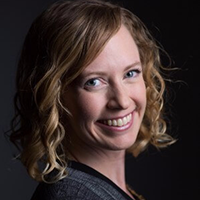From my personal perspective, diversity and inclusion have great value. Each action we take as a human being on this planet has an impact on society. This is why I try my best to ensure my actions help build equality in this world. I want to help create an inclusive society and so, I embrace diversity within the community I support. This awareness grew over time and through curiosity, and by regularly asking myself, how I can help communities I manage to be more diverse and inclusive? For Singularity University, diversity and inclusion are part of almost all our conversations regardless if they are about team matters, hosting of events, or finding new regional chapters.
It’s important for those in a convening role to take on the perspective of members and event participants with different backgrounds. Wondering how people will experience their journey with your community regardless of whether the interaction is a virtual event, a meeting or a membership. At Singularity University we are, for example, actively seeking diverse candidates to run our local chapters and are explicit in communicating that we welcome diversity.
Further, a commitment to diversity is part of our onboarding materials for local chapter leaders and an optional, one-hour training is hosted regularly to dive deeper into the topic. The purpose is to ensure leaders have the tools and resources to follow their intention of being inclusive and design their activities with that intention in mind.
We aim to intentionally invite diversity into our community on a few different levels:
Member pipeline
We are thoughtful about where and how people learn about our community, and use care to createthe language of our online presence. We encourage other virtual community managers to think about ways to show you welcome diversity and “live” inclusion.
Selecting representatives on the ground
We use the process of identifying community leaders as a chance to increase diversity. A first step is to be aware of that gap of diversity in the community and use the application process as an opportunity to spread the word so it reaches the right people. The second opportunity is the selection. Being aware of personal preferences and biases for example,reading the names of applicants.
Tracking diversity
Tracking progress in diversity is a very delicate topic. It is complex to identify people in categories (gender, background, race, etc.), but necessary to get a better overview of the diversity in the community and potential gaps. Some disabilities, for example, are not visible but might still need to be addressed to make members feel included. Surveys and interviews can help to collect valuable information so you can be more intentional in the future. This is a relevant topic SU is exploring: using data to tailor virtual and in-person activities to the community.
Retention
Return rates at different online and offline events or, knowing if hired staff or volunteers are staying in the job are indicators of an inclusive atmosphere. There are multiple reasons for people to leave a virtual community and not feeling included can definitely be one of them.
Take small actions at events to show you care.
Diversity starts with accessibility. For example, tell attendees how buildings are accessible and choose a venue that works well for the local target group.
Serve a non-alcoholic welcome drink in a similar glass and in a similar colour to the alcoholic drink. This way people who do not drink do not stick out or asked to need to explain themselves.
Select a space with gender-neutral bathrooms, diaper-changing rooms in mens-room.
The book “Giving Notice” by Freada Kapor Klein really inspired me. The author explores, “how even well-intentioned people can harbor unconscious biases that perpetuate stereotypes. Each year more than two-million professionals and managers leave their jobs, pushed out from the pressure of small comments, whispered jokes, and not-so-funny emails.” After seeing what damage uniformity and exclusion can do to a workplace, I imagined the impact it could have in virtual communities.
Two concrete challenges I am facing right now.
Identifying the right categories and language when gathering data using. via surveys. Global terms do not always fit the local context and wordings. Open questions seem to be one way to work around it but this makes comparison harder.
The second concrete challenge: How to address inappropriate comments. Depending on the context, those moments can be an educational opportunity especially when we ask the person to rephrase their statement.
Educate yourself. There are books, blog posts, videos available that can unpack this topic not just personally but also societally for you. On an individual level, uncovering your unconscious biases and attitudes are an important starting point. From there, move from awareness to learning what actions are most appropriate and inclusive.
Keep in mind that each social group and community are different and it is not a one-size-fits-all approach but rather lifelong learning. Every new setting or different group will require you to reconsider what diversity and inclusion means in this context. At the center is the wish to create a pleasant experience for members which will lower the burden of engagement for them and clear the way for collective impact. It is a great opportunity to make members into allies and think jointly about how to shape an inclusive community.

